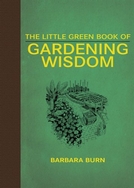 Gardeners in Middle Tennessee (home of The Garden Bench) know that, in spite of what the calendar says, early spring has arrived. It’s almost March, and buds are swelling, bulbs are up and many are blooming, tips of favorite perennials are poking up through the mulch. And while we know that winter can – probably will – visit us again in a few days, we can get outdoors and enjoy the emergence of the new season with these early-spring tips and tasks.
Gardeners in Middle Tennessee (home of The Garden Bench) know that, in spite of what the calendar says, early spring has arrived. It’s almost March, and buds are swelling, bulbs are up and many are blooming, tips of favorite perennials are poking up through the mulch. And while we know that winter can – probably will – visit us again in a few days, we can get outdoors and enjoy the emergence of the new season with these early-spring tips and tasks.
Prepare new garden beds: Have the soil tested (check with your county’s Extension service to learn how). Remove grass and dig or till soil 8 to 10 inches deep and mix with soil amendments and organic matter to improve drainage.
Add a dose of fertilizer to perennials as soon as you see new growth. Keep it light; too much fertilizer may result in lanky growth.
Cut back liriope and other ornamental grasses. It’s easier now that it will be once new growth emerges.
If your fescue lawn looks a little skimpy, overseed early this month. Fescue grows best when the weather is still cool. It’s best to wait until early fall for a complete lawn renovation.
Herb transplants that don’t mind cool weather — parsley, cilantro, sage, oregano – can go in the ground now. And of course you can also plant seeds and transplants of radishes, lettuce, spinach and other cool-season vegetables.
Clip dead stems from perennial herbs – thyme, sage, lavender, rosemary (if your rosemary survived; many Middle Tennessee gardeners’ rosemary plants succumbed to the cold this winter). Pruning those perennial herbs encourages vigorous new growth. Remove mulch or leaves that may be covering perennials in garden beds.
If you need to prune nandinas, flowering quince and other airy shrubs, don’t shear the shrubs. Reach in and remove about a third of the branches at ground level.
Give pansies a light dose of fertilizer as they continue to bloom through early spring.
When you cut daffodils and other early-spring flowers to bring inside, cut the stems at an angle and place them in water right away. Change the water in the vase daily to keep them fresh longer.
Filed under: Garden Tips & Tasks, Seasons | Tagged: annuals, bulbs, Daffodils, herbs, March, Nashville Lawn and Garden Show, pansies, perennials, soil testing | Leave a comment »













